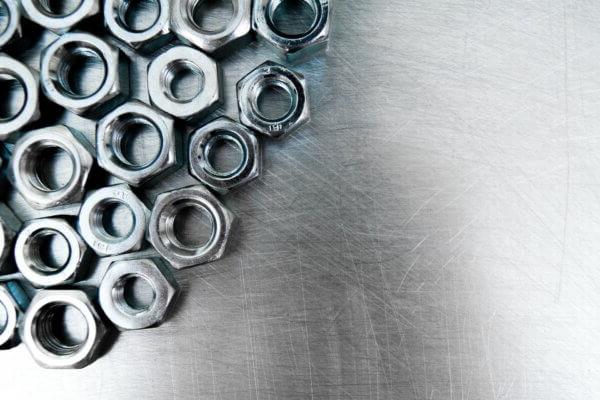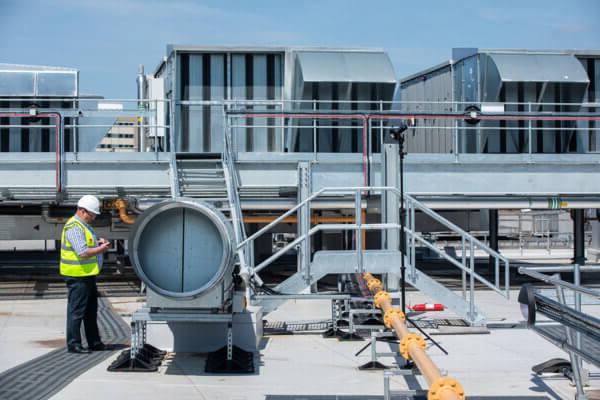Predictive and preventative: the most crucial words in maintenance
What’s your biggest engineering and technical services challenge? Where do faults and failures crop up the most?
The modern estate can be incredibly complex to manage. For plenty of organisations, there are gleaming, new spaces equipped with all the bells and whistles that sit alongside buildings that are many decades old. And that means some engineers have to jump from fixing dated boilers to monitoring sensor data and back again – all in the space of a single shift.
Different buildings have different needs, too, of course. Depending on your industry, your estate may contain critical environments like data centres, as well as offices and call centres. The needs of these spaces, and every asset within them, must be prioritised accordingly.

With all of that in mind, creating an efficient and effective maintenance strategy can be testing. Knowing where and when to dedicate the right resources is a challenge we all face. But not one without solutions.
As more engineering-focused technologies enter the market at increasingly affordable prices, now is the perfect opportunity to reassess and modernise your practices. But what should you be aiming for?
From reactive to proactive maintenance
The effectiveness of maintenance activities exists on a sliding scale. The most basic (and inefficient) form of maintenance is reactive. Quite simply, when something breaks, you fix it.
This almost always involves unexpected downtime and disruption to business activities. But, for those with limited resources and sprawling estates, regularly fighting fires can be familiar territory.
A little further along the scale, preventative maintenance can help avoid these unexpected incidents. This approach requires an understanding of individual assets and their requirements, and attempts to make sure that maintenance is conducted before a point of failure.
This allows maintenance engineering to be scheduled for periods that have the least impact on business performance, which means…
- Reduced costs
- Prolonged asset life
- Minimised disruption
Normally reactive maintenance is only practiced when failure is unexpected. But a new dawn of technology and facilities transformation means engineering teams can be even more effective – using predictive maintenance.
Predictive maintenance is an advanced approach and involves not only an understanding of how individual assets work, but also using real-time data from their current performance levels and conditions.
With insight fed directly from assets to your teams, this means you can…
- Understand when maintenance is most needed
- Avoid downtime
- Reduce costs
- Be assured of optimal efficiency
But what enables it?
The tech at the heart of engineering transformation
Over the last few years, facilities management technology has grown exponentially.
IoT sensors are now commonly used to provide real-time information from critical assets to engineering teams. And the rise of artificial intelligence has made interpreting that information far easier and more accurate. This provides teams with the insights they need to monitor assets around the clock and make the right decisions more quickly. But that’s really just the start.
This information can also be used to build digital twins of operating environments, which allow you to monitor activity and simulate any changes in real time. Couple this with remote maintenance and augmented and virtual reality (AR and VR) technologies used to guide teams on the ground through repairs. Now you can build a maintenance strategy that is proactive and predictive, and that taps into the expertise across your entire company.

Realistically, very few organisations have an endless budget to spend on what is often seen elsewhere as simply “keeping the lights on”. So how do you devise a strategy that makes sure your money is spent in the best way and what matters most continues to function?
3 tips for an exceptional maintenance engineering strategy
- Understand the importance of always-on and working uninterrupted
For many, maintenance is a must-have and isn’t given much thought other than to make sure a box is ticked. It’s about keeping things working, which can mean doing the bare minimum.
We often hear clients say they can’t afford the downtime required to conduct maintenance at certain points. But the reality is, if you don’t, you will experience more downtime and greater costs later down the line. (And if you have an asset that you really can’t afford to turn off, then it’s wise to invest in a backup.)
Ultimately, maintenance activities should be seen as an investment – one that will result in savings, will make sure you can work uninterrupted and can even have a measurable impact on the comfort and performance of your people. Delaying important tasks never works out – so be proactive and intentional with your strategy.
- Prioritise your investments
Every maintenance engineering strategy will be different, simply because every estate’s needs are different. If you work in a critical environment, like healthcare, your needs will differ from a retail centre or office building.
That’s why the first step is to understand your non-negotiables – what absolutely cannot fail? That should be your starting point.
By looking at every asset and environment across your estate, you can prioritise what is most critical to your operations. You may not be able to afford the technology that enables predictive maintenance across your entire estate in house, but you can choose where that money is best spent to minimise disruption and costs. It’s about a range of options that meet your needs and are within your financial means.

- Build in redundancy
Finally, maintaining the assets and environments you are responsible for is only half the battle. There is a host of external factors that can affect the performance of your environment.
For instance, what happens if there’s an interruption to your power supply? If you haven’t got planned redundancy or resilience, then no matter what else you do, you’re destined to encounter failure.
The goal should be to ensure that every source of possible disruption, from human error to system failure, is either mitigated against or removed. So first identify all those possibilities, and then set out a plan to safeguard against them.
Need some guidance?
As the largest facilities management service provider in the UK, Mitie has spent years combining human expertise with the latest technologies. We’ve established and executed maintenance and engineering strategies for some of the country’s biggest names.
We help organisations predict, prevent and respond better – moving beyond reactive maintenance into resilience, while assuring operational efficiency, compliance and safety.
Read next

Mitie’s engineers keep Co-op running smoothly
Mitie have been responsible for engineering and maintenance at key Co-op sites since 2017, delivering savings in cost, time and energy.
Mitie welcomes next generation of engineering talent
Mitie, the UK’s leading facilities transformation company, recently ranked at number 52 in the Top 100 Apprenticeship Employers list, has enrolled 80 new trainee engineers onto its award-winning apprenticeship programme. Marking the highest intake…

Critical infrastructure, complacency creep and how to avoid it
There have been a few ‘pinch yourself’ moments in my career. One of them came when I descended into an empty water reservoir beneath one of the UK’s busiest transport hubs. It was a…